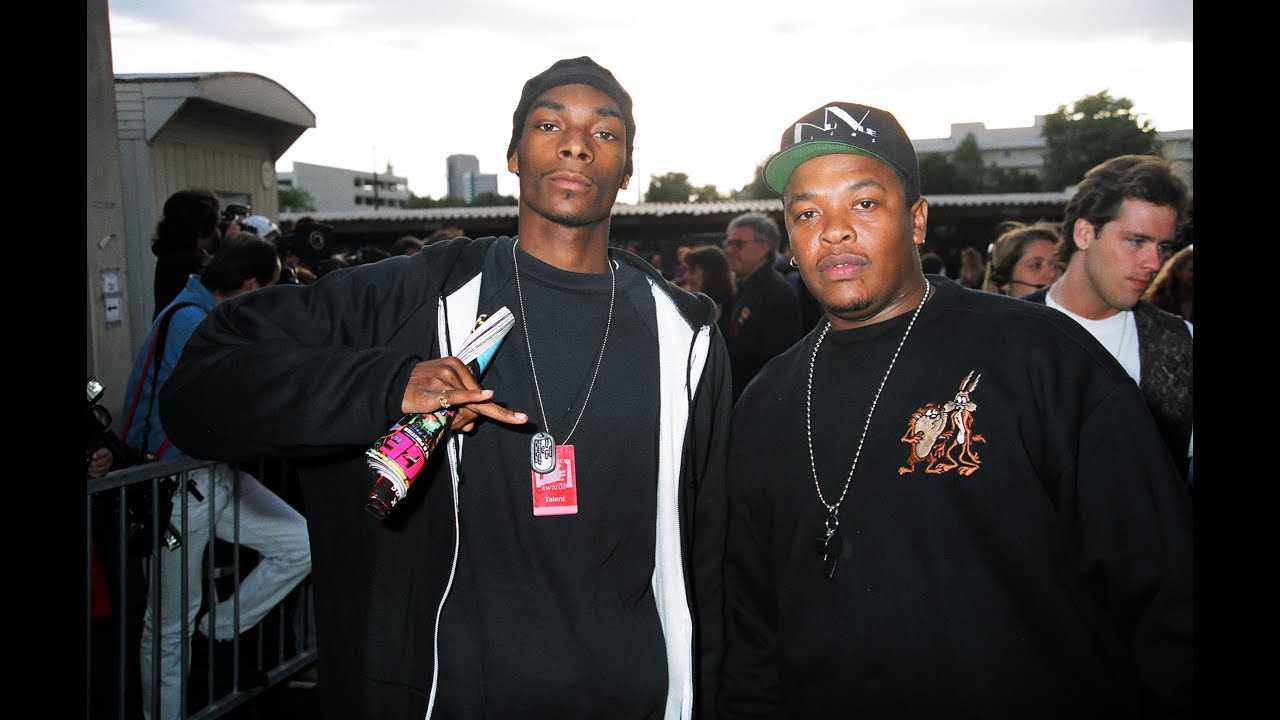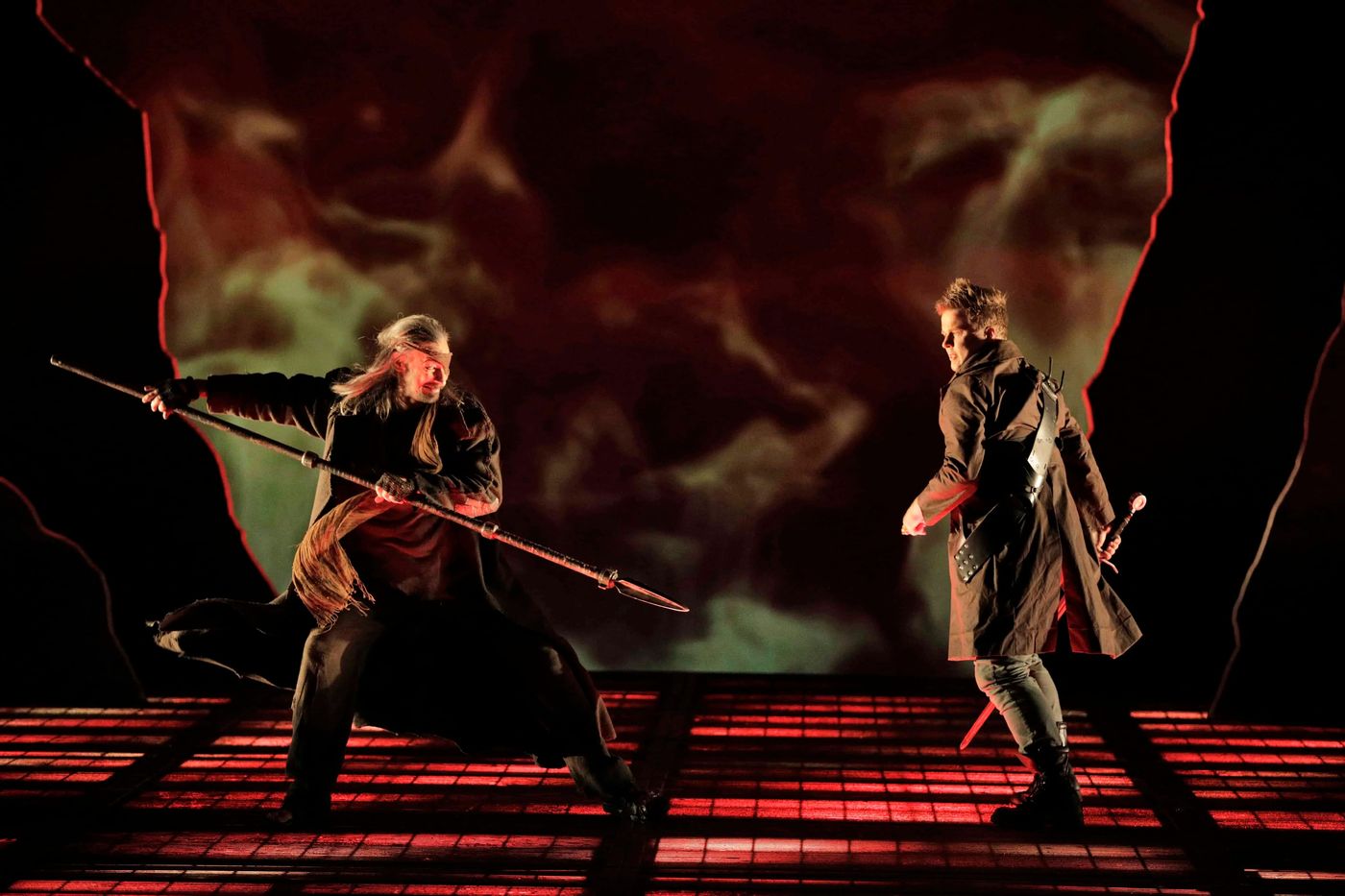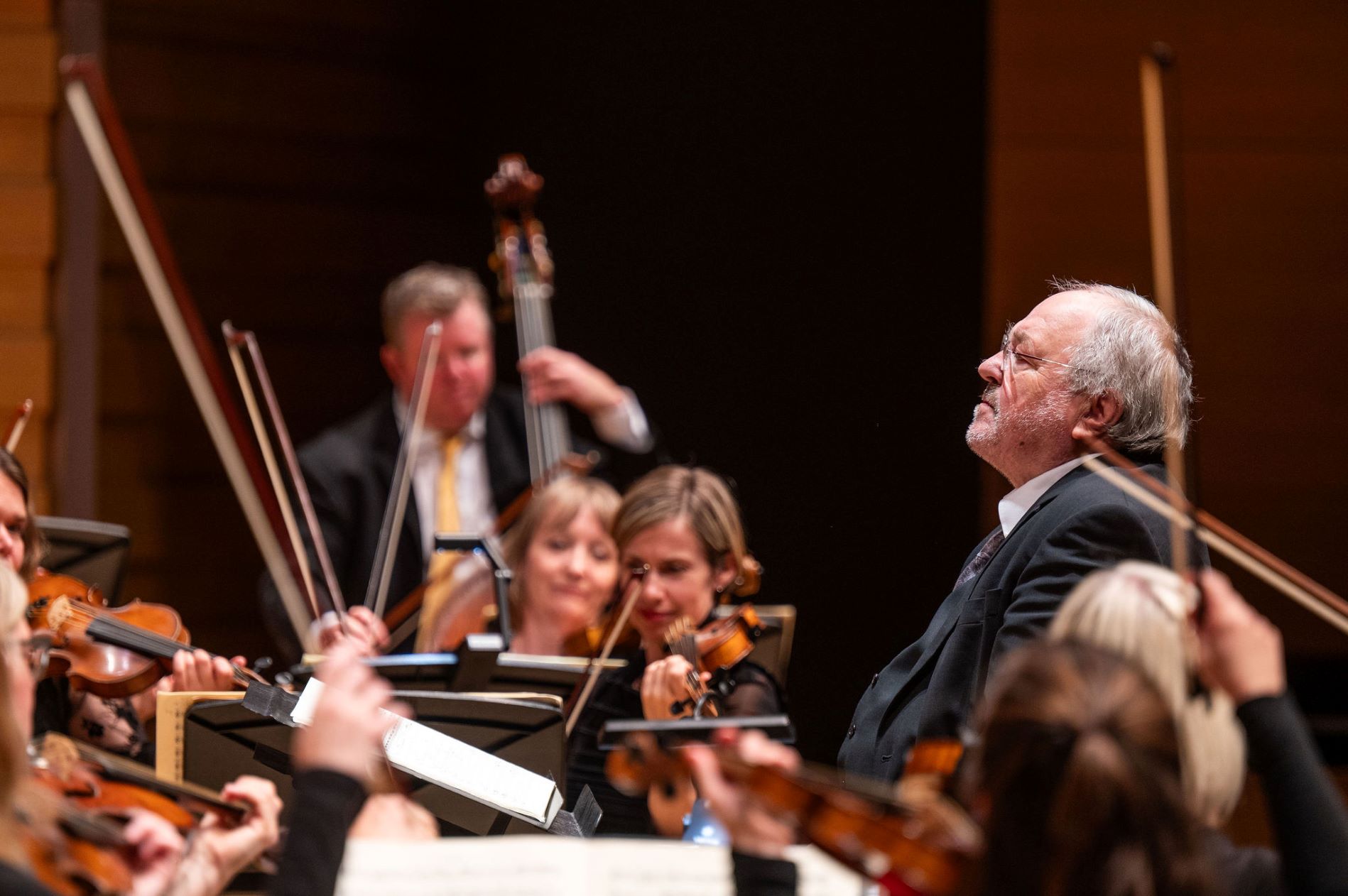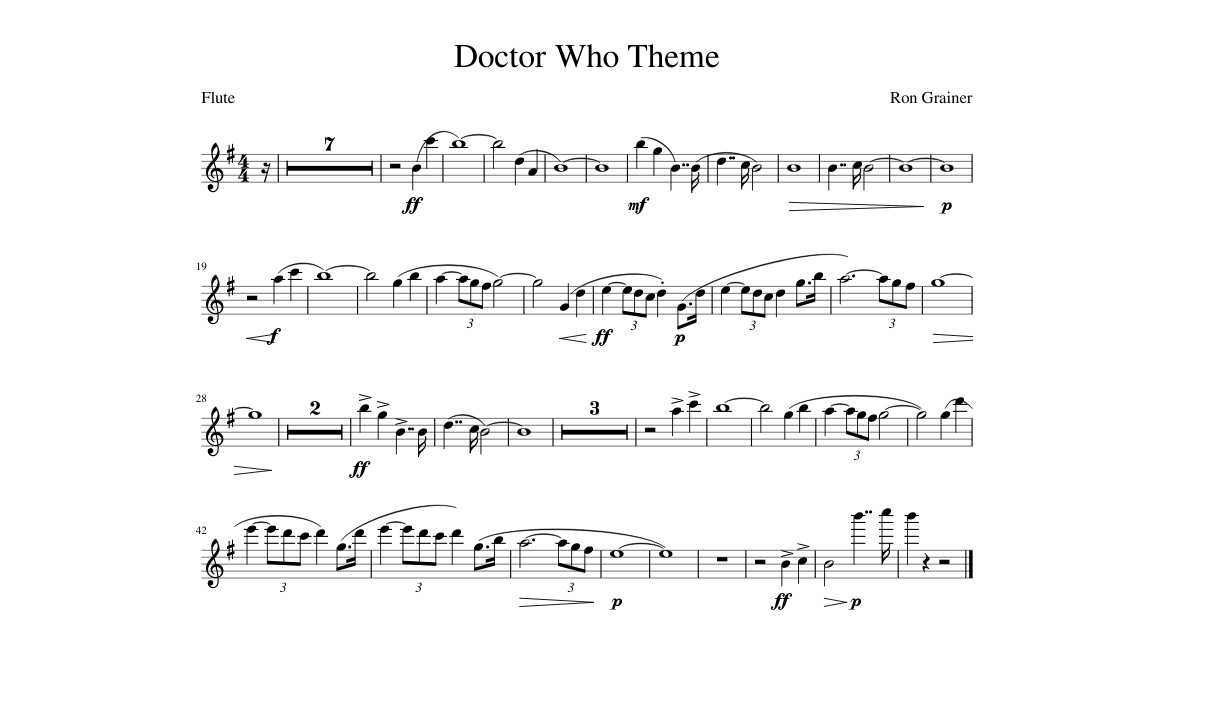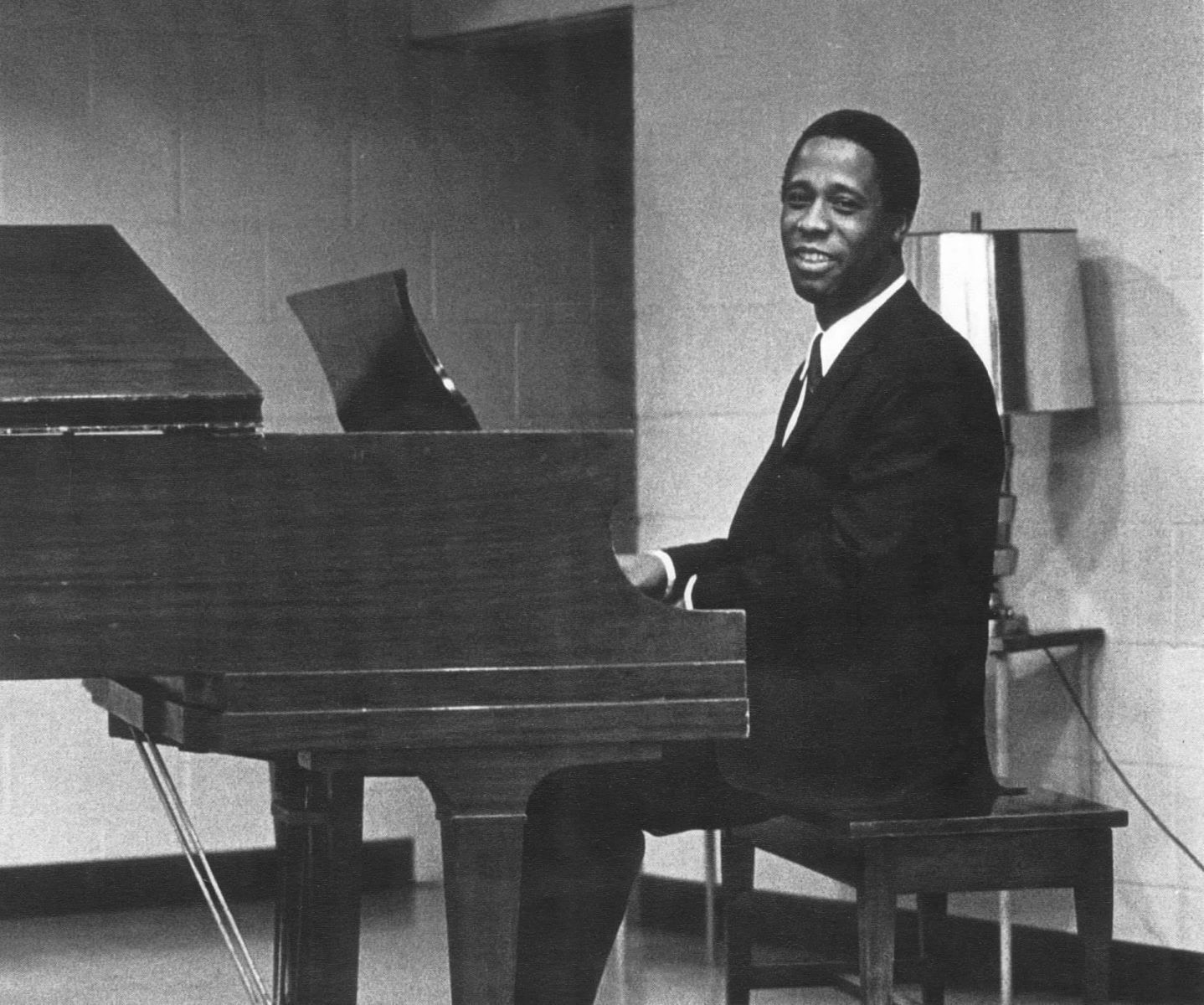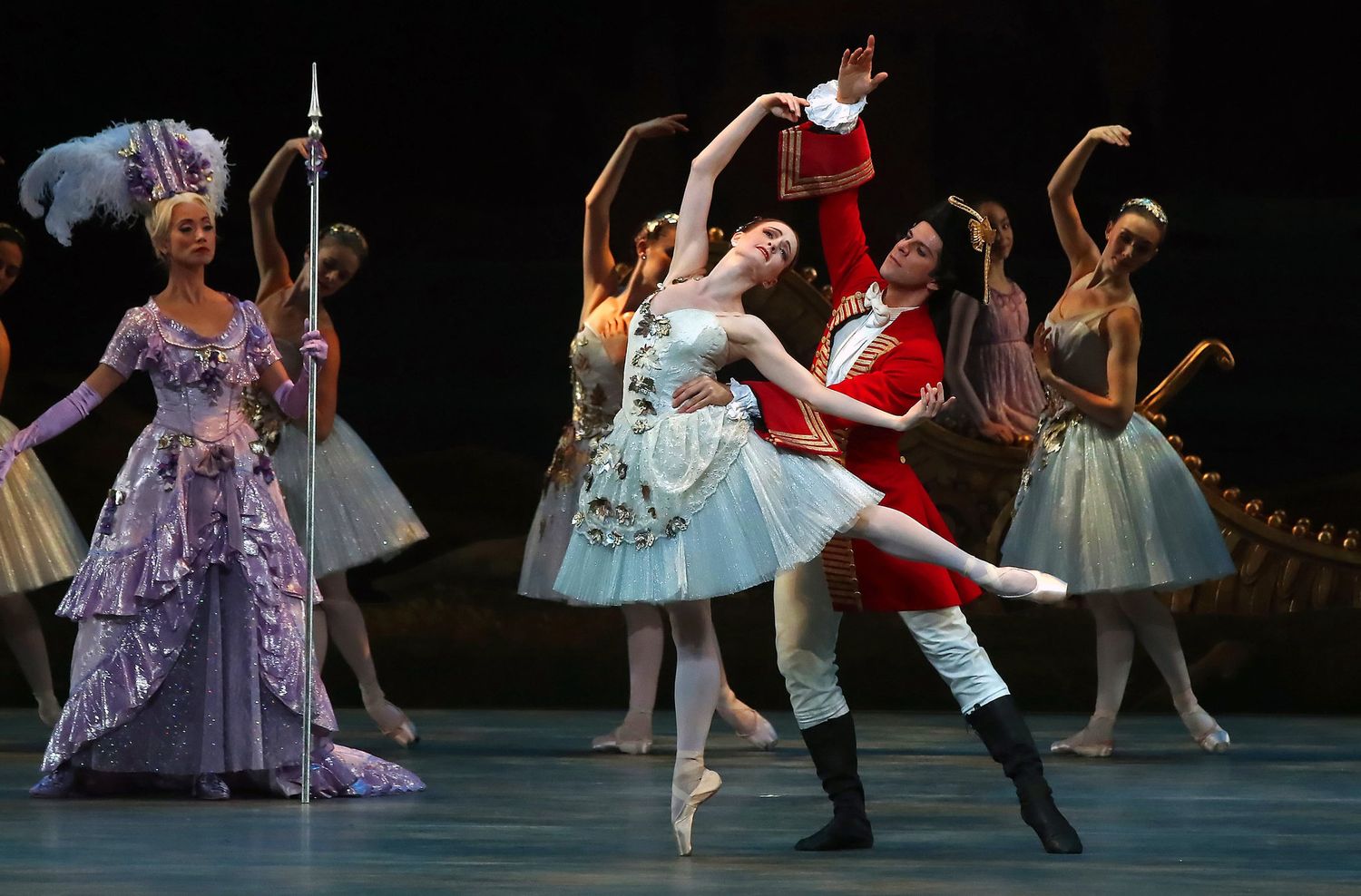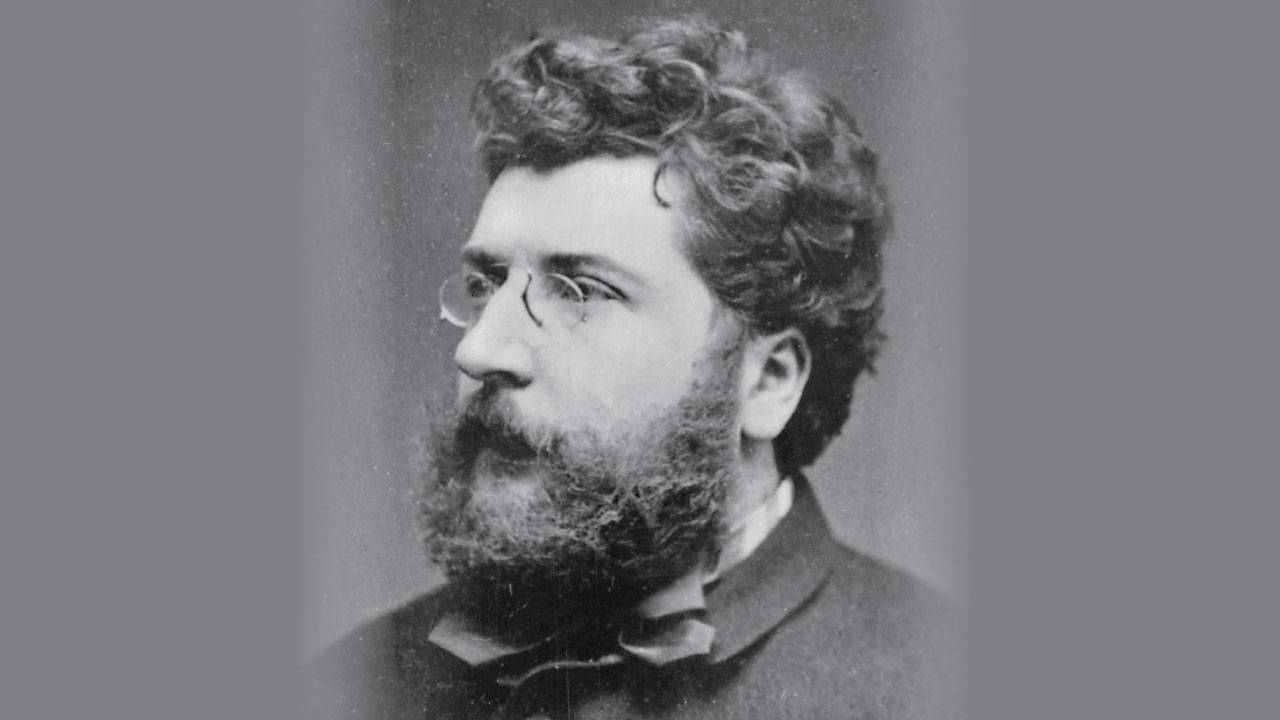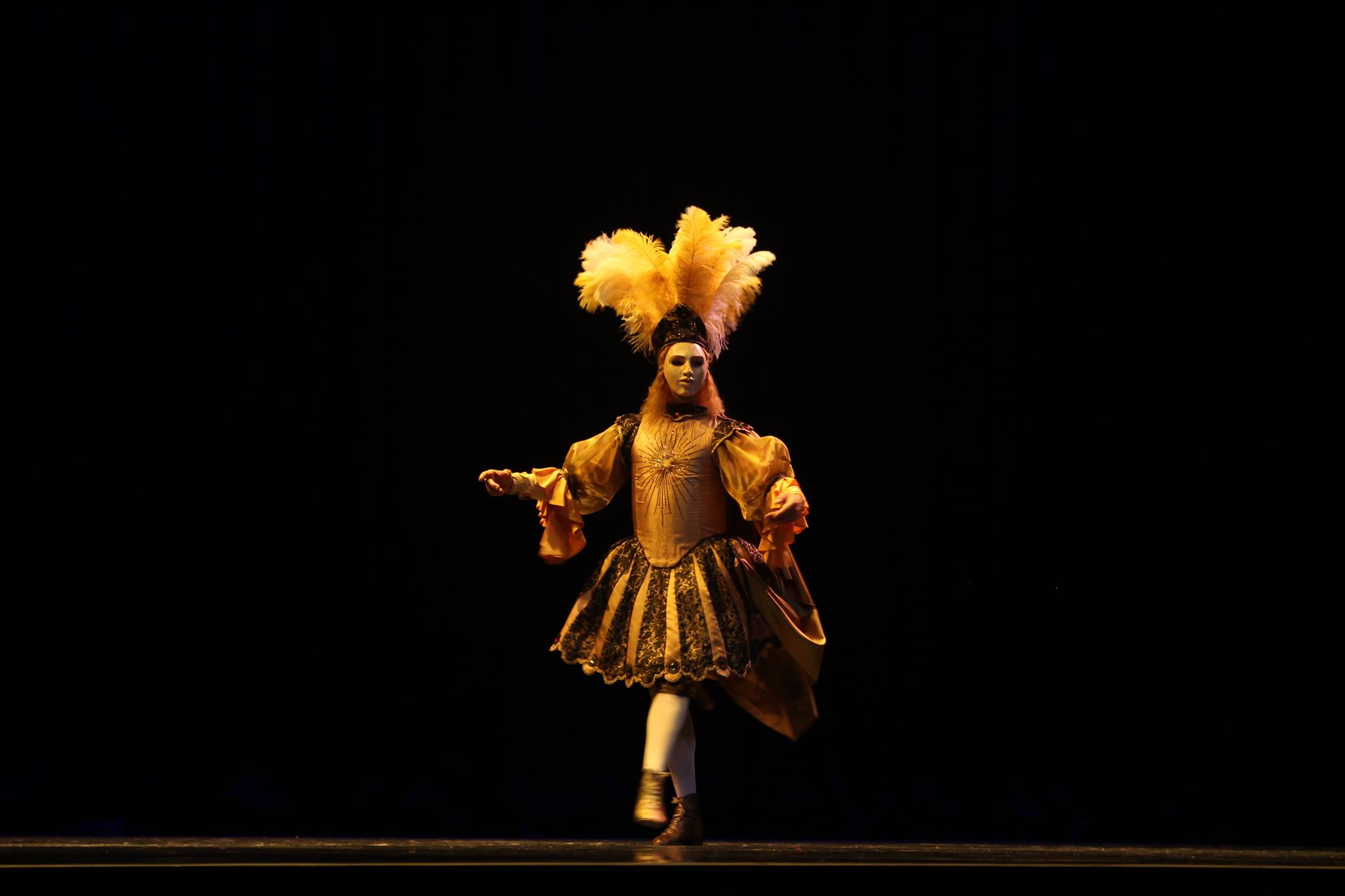Home>Events & Info>Opera>Who Wrote The Magic Flute Opera
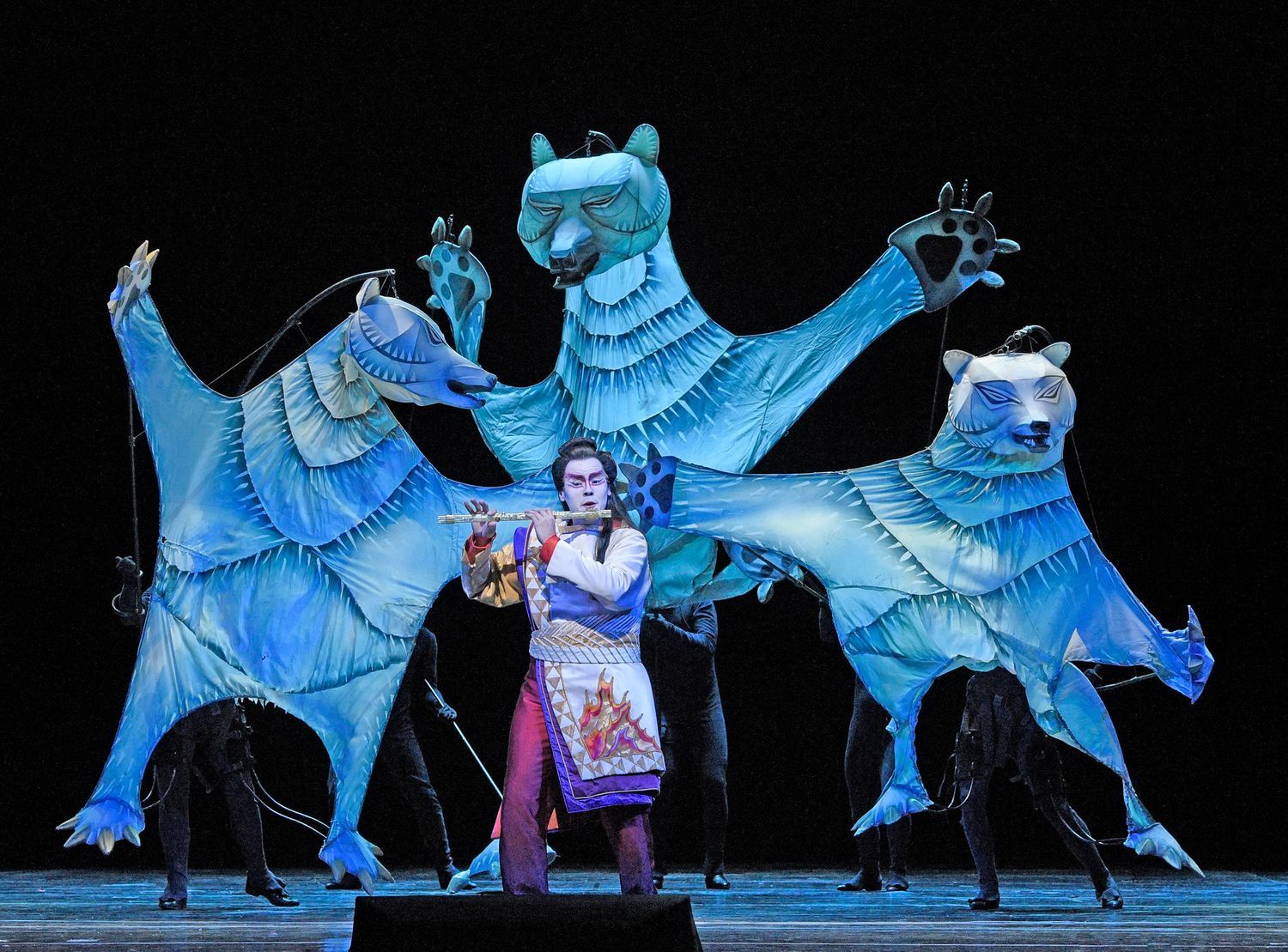

Opera
Who Wrote The Magic Flute Opera
Modified: January 22, 2024
Discover the brilliant mind behind the iconic opera, The Magic Flute. Uncover the genius of the composer and unravel the mysteries of this timeless masterpiece.
(Many of the links in this article redirect to a specific reviewed product. Your purchase of these products through affiliate links helps to generate commission for AudioLover.com, at no extra cost. Learn more)
Table of Contents
Introduction
The world of opera is filled with masterpieces that have captivated audiences for centuries. One such masterpiece is “The Magic Flute,” an enchanting opera that continues to dazzle audiences with its blend of captivating music and fantastical storytelling. But have you ever wondered who wrote “The Magic Flute” opera? In this article, we will delve into the origins of this beloved opera and explore the individuals involved in its creation.
First performed in 1791, “The Magic Flute” (Die Zauberflöte in its original German title) was composed in the final year of Mozart’s life. The opera tells the story of Prince Tamino and his quest to rescue Princess Pamina from the clutches of the villainous Queen of the Night. Along the way, he is aided by the comical birdcatcher Papageno, encounters magical characters, and undergoes various trials. It is a tale of love, enlightenment, and ultimately, the triumph of good over evil.
As we explore the authorship of “The Magic Flute” opera, it is important to understand the collaborative nature of the art form. Opera is typically a fusion of music, poetry, and theatrical performance, requiring the talents of composers, librettists, and performers. The composer creates the music, while the librettist writes the text, often in the form of a libretto. Together, they give life to the characters and story.
So, who are the individuals behind the creation of “The Magic Flute” opera? Let’s dive into the details and shed light on the geniuses responsible for this enduring work of art.
Overview of “The Magic Flute Opera”
“The Magic Flute” is a two-act opera that seamlessly blends elements of comedy, fantasy, and symbolism. The music is composed in a variety of styles, ranging from high drama to lighthearted melodies, showcasing Mozart’s versatility and mastery as a composer.
The opera opens with Prince Tamino being pursued by a monstrous serpent. Just as he is about to be overcome by the creature, three ladies, attendants of the Queen of the Night, come to his rescue and slay the serpent. Intrigued by Tamino’s noble appearance, they show him a picture of the Queen’s daughter, Pamina, and he instantly falls in love.
Tamino is granted permission by the Queen of the Night to rescue Pamina from the clutches of Sarastro, her supposed captor. Joined by the birdcatcher Papageno, who provides comic relief throughout, Tamino embarks on a journey filled with tests of character and courage. The two men are equipped with magical instruments that aid them in their quest.
The duo eventually arrives at Sarastro’s realm, where they encounter various trials, including the famous “Trial by Fire” and “Trial by Water.” Through these trials and their experiences, Tamino and Papageno ultimately learn important lessons about love, wisdom, and the true nature of good and evil.
Symbolism plays a significant role in “The Magic Flute” opera. The characters and events are often representative of deeper philosophical and moral concepts. For example, Sarastro represents wisdom and enlightenment, while the Queen of the Night symbolizes darkness and malevolence. The opera’s themes of initiation, brotherhood, and the pursuit of truth reflect the influence of Freemasonry, a secretive organization that Mozart himself was a member of.
With its memorable characters, melodic tunes, and rich symbolism, “The Magic Flute” continues to enthrall audiences worldwide. It is a testament to Mozart’s profound understanding of the human experience and his ability to convey deep emotions through his music.
Composer of “The Magic Flute Opera”
The genius behind the enchanting music of “The Magic Flute” opera is none other than Wolfgang Amadeus Mozart, one of the most celebrated composers in history. Born in 1756 in Salzburg, Austria, Mozart showed remarkable musical talent from an early age, composing his first symphony at the age of eight. He went on to create a vast body of work encompassing symphonies, concertos, chamber music, operas, and more.
Mozart’s involvement in the opera world was extensive, with “The Magic Flute” marking one of his final and most beloved contributions to the genre. The opera showcases Mozart’s exceptional ability to blend dramatic flair with melodic beauty in his compositions. From the sweeping overture to the intricately layered vocal ensembles, the music of “The Magic Flute” is a testament to Mozart’s innate musical craftsmanship.
Mozart wrote the music for “The Magic Flute” in 1791, and it premiered on September 30th of that year. Despite his declining health and financial struggles, Mozart poured his immense talent and creativity into the opera, delivering a work that continues to captivate audiences to this day.
One of the notable aspects of Mozart’s music in “The Magic Flute” is his ability to evoke a wide range of emotions. From the tender love duets between Tamino and Pamina to the thrilling coloratura arias of the Queen of the Night, Mozart’s music effortlessly captures the essence of each character and scene.
Mozart’s composition style in “The Magic Flute” showcases his mastery of both the comic and the profound. The opera encompasses elements of both lightheartedness and deep emotional resonance. This masterful balance is evident in the intricate harmonies, rich orchestrations, and intricate vocal lines that intertwine throughout the opera.
With “The Magic Flute,” Mozart demonstrated his ability to transcend musical boundaries and create works that resonate with audiences across centuries. His legacy as one of the greatest composers of all time is solidified by his contributions to this extraordinary opera, a testament to his brilliance and enduring impact on the world of music.
Librettist of “The Magic Flute Opera”
The libretto, or the text of “The Magic Flute” opera, was written by Emanuel Schikaneder, a talented actor, singer, and theater manager. Born in 1751 in Straubing, Germany, Schikaneder was a prolific figure in the Viennese theater scene during Mozart’s time.
Schikaneder collaborated closely with Mozart to create the storyline and dialogue of “The Magic Flute.” Drawing inspiration from various sources, including fairy tales and Masonic symbolism, Schikaneder crafted a libretto that perfectly complemented Mozart’s musical compositions.
The libretto of “The Magic Flute” is a unique blend of elements, combining elements of comedy, fantasy, and allegory. It follows the journey of Prince Tamino as he undergoes trials and challenges to rescue Princess Pamina from Sarastro’s realm. Alongside the main plot, the libretto explores themes of love, enlightenment, and the struggle between good and evil.
Schikaneder’s expertise as a performer informed the dialogue and characterizations in the libretto. He had a keen understanding of what would resonate with audiences, incorporating comedic elements and memorable lines that brought the characters to life.
Moreover, Schikaneder’s involvement in the Freemasonry movement heavily influenced the libretto of “The Magic Flute.” The Masonic symbolism is prevalent throughout the opera, with themes of initiation, brotherhood, and the pursuit of wisdom being central to the plot. Schikaneder and Mozart were both Freemasons, and their shared Masonic beliefs and ideals infused the libretto with deeper allegorical meaning.
It is worth noting that while Schikaneder is credited as the primary librettist of “The Magic Flute,” there is evidence to suggest that other individuals, including Mozart himself, may have had a hand in shaping the libretto. The collaborative nature of opera often involves revisions and input from multiple sources, blurring the lines of authorship.
Regardless of the specific contributions and collaborations, Emanuel Schikaneder’s role as the librettist of “The Magic Flute” was essential in creating the captivating storyline, engaging dialogue, and symbolic depth that make the opera a timeless masterpiece.
Mozart’s Involvement in “The Magic Flute Opera”
Wolfgang Amadeus Mozart’s involvement in “The Magic Flute” opera went beyond his role as the composer. While he is best known for his remarkable musical contributions, Mozart had a significant influence on the overall creative direction of the opera.
From the beginning stages of the opera’s development, Mozart was actively involved in shaping the storyline and characterizations. He worked closely with librettist Emanuel Schikaneder to refine the plot, providing insights and suggestions that enhanced the dramatic and musical elements of the opera.
Mozart’s deep understanding of the human voice and his ability to write for specific singers influenced the vocal writing in “The Magic Flute.” He tailored the music to suit the strengths and abilities of the singers who would perform the roles, allowing them to shine in their respective arias and ensembles.
Mozart also contributed to the orchestration of the opera, carefully selecting the instruments and crafting the musical textures to highlight the emotions and moods of each scene. His orchestral writing in “The Magic Flute” showcases his brilliance in creating rich, vibrant, and nuanced soundscapes.
Another notable aspect of Mozart’s involvement was his ability to juxtapose different musical styles and genres within the opera. From the grandiose choral numbers to the lyrical arias, Mozart seamlessly blended elements of opera seria, opera buffa, and Singspiel (a German form of opera with spoken dialogue) to create a unique and captivating musical experience.
Furthermore, Mozart’s talents as a conductor came into play during the rehearsals and performances of “The Magic Flute.” He worked closely with the singers and musicians, guiding them through the intricacies of the music and ensuring that his vision for the opera was realized on stage.
Despite facing financial challenges and declining health during the composition of “The Magic Flute,” Mozart dedicated his expertise, creativity, and passion to create a work of art that would stand the test of time. The opera showcases his profound understanding of human emotions, his mastery of musical structure and form, and his ability to touch the hearts and minds of audiences.
Mozart’s involvement in “The Magic Flute” was not merely that of a composer; he was a visionary who played an integral role in shaping the opera’s narrative, vocal writing, orchestration, and overall artistic direction. His contributions, both musical and creative, solidify “The Magic Flute” as one of the greatest operas ever composed.
The Masonic Influence in “The Magic Flute Opera”
“The Magic Flute” opera is infused with Masonic symbolism and themes, reflecting the involvement of both Mozart and librettist Emanuel Schikaneder in the Freemasonry movement during the late 18th century.
Freemasonry was a secretive society that espoused principles of brotherhood, morality, and the pursuit of knowledge. It was a melting pot of ideas, drawing inspiration from various philosophical and religious beliefs. Both Mozart and Schikaneder were members of Masonic lodges, and their experiences and beliefs strongly influenced the creation of “The Magic Flute.”
One of the prominent Masonic themes in the opera is the journey of initiation and enlightenment. The character of Tamino undergoes a series of trials and challenges, representing the spiritual and intellectual growth one experiences during the path to wisdom. Similarly, the character of Pamina represents the purity and virtue sought by initiates.
Sarastro, the leader of the Temple, embodies the ideals of the enlightened Masonic leader. He is depicted as wise, just, and compassionate, serving as a beacon of guidance and wisdom. The contrasting character of the Queen of the Night, with her dark and manipulative nature, symbolizes the struggle between good and evil.
The rituals and symbols of Freemasonry are also reflected in the opera. The number three, a significant Masonic symbol representing balance and harmony, is prominent throughout “The Magic Flute.” The Three Ladies who assist Tamino, the Three Boys who guide the protagonists, and the Three Ordeals Tamino must undergo are all examples of the recurrent use of this symbolic number.
The character of Papageno, the comical birdcatcher, also represents certain Masonic concepts. He serves as a contrast to the more serious and spiritual aspects of the opera, embodying the imperfect and relatable human nature. While he initially desires worldly pleasures, his journey of self-discovery and the embrace of love represents the search for personal fulfillment and the realization of one’s true purpose.
Furthermore, the use of music as a transformative and transformative force in the opera aligns with Masonic beliefs. Music is portrayed as a means of spiritual elevation and a tool for enlightenment, as depicted by the powerful and enchanting melodies throughout the opera.
“The Magic Flute” opera stands as a testament to the influence of Freemasonry on Mozart and Schikaneder. Through its symbols, themes, and storyline, the opera encapsulates the values and ideals of the Masonic movement, providing a rich and allegorical experience for audiences.
It is important to note that while the Masonic influence is evident, “The Magic Flute” remains a work of art that can be appreciated on multiple levels, regardless of one’s knowledge of Freemasonry. Its universal themes of love, enlightenment, and the triumph of good over evil resonate with audiences from all walks of life.
The Controversy Surrounding the Authorship
Throughout the years, there has been ongoing speculation and debate surrounding the authorship of “The Magic Flute” opera. While traditionally attributed to composer Wolfgang Amadeus Mozart and librettist Emanuel Schikaneder, some theories suggest that Mozart’s involvement may have been more limited than initially believed.
One theory proposes that Mozart’s role in the creation of “The Magic Flute” was primarily musical, leaving the majority of the libretto to Schikaneder. This argument is supported by the fact that Mozart was known to delegate such tasks to others, and Schikaneder’s talents as an actor and theater manager made him well-suited to handle the dramatic and textual aspects of the opera. According to this theory, Mozart’s contributions may have been limited to revising and enhancing the musical aspects of the opera.
Another controversial aspect is the alleged involvement of Ignaz von Born, a fellow Freemason and friend of Mozart, in the creation of “The Magic Flute.” Some scholars believe that von Born had a significant influence on the symbolism and Masonic elements present in the opera’s libretto. This theory suggests that von Born may have contributed ideas and concepts related to Freemasonry, which were then incorporated into the final version of the opera.
Furthermore, it is speculated that other individuals within Mozart’s circle may have played a part in shaping the libretto. Though there is limited evidence to support this claim, it is possible that friends and collaborators provided input and suggestions regarding the plot, characters, and dialogue of “The Magic Flute.”
Despite these alternative theories, it is important to note that the traditional attribution of authorship to Mozart and Schikaneder remains widely accepted. The collaboration between these two talented individuals was undoubtedly pivotal in creating the imaginative and transformative world of “The Magic Flute.” Whether Mozart’s involvement was more limited or extensive, his musical genius undoubtedly played a significant role in shaping the opera’s enduring popularity.
Ultimately, the controversy surrounding the authorship of “The Magic Flute” adds an intriguing layer to its history. It sparks discussions and further exploration of the collaborative process in opera composition, shedding light on the multifaceted nature of artistic creation.
Conclusion
“The Magic Flute” opera is a timeless masterpiece that continues to captivate audiences with its enchanting music, fantastical storyline, and profound themes. The collaborative effort of composer Wolfgang Amadeus Mozart and librettist Emanuel Schikaneder resulted in a work of art that transcends musical boundaries and speaks to the universal human experience.
Mozart’s involvement in “The Magic Flute” extended beyond his role as the composer. His influence in shaping the storyline, characters, and orchestration contributed to the opera’s enduring impact. Mozart’s musical genius is evident in the intricate harmonies, melodic beauty, and emotional depth of the compositions, which continue to enchant audiences to this day.
Schikaneder, as the librettist, brought his creative vision and theatrical expertise to the opera. Drawing inspiration from fairy tales, Masonic symbolism, and his Masonic beliefs, Schikaneder crafted a compelling narrative that explores themes of love, enlightenment, and the struggle between good and evil. The opera’s use of comedy, symbolism, and allegory adds depth and richness to the overall experience.
The Masonic influence in “The Magic Flute” further adds to its intrigue and symbolic depth. The opera’s themes of initiation, brotherhood, and the pursuit of wisdom reflect the shared beliefs of Mozart, Schikaneder, and their involvement in the Freemasonry movement.
While there may be controversies surrounding the specific contributions and authorship of “The Magic Flute,” the collaborative nature of opera ensures that multiple voices and influences shape the final product.
Regardless of the debates, one cannot deny the enduring legacy of “The Magic Flute” opera. Its timeless melodies, vibrant characters, and profound themes continue to resonate with audiences worldwide. It serves as a testament to the power of music and storytelling, transcending time and cultural boundaries.
So, who wrote “The Magic Flute” opera? It is the result of the creative genius of Mozart and the artistic vision of Schikaneder, collaborating to create a masterpiece that showcases the beauty and transformative power of opera. With its mesmerizing music, compelling storyline, and deep symbolism, “The Magic Flute” remains a treasure of the operatic repertoire, enchanting audiences for generations to come.

